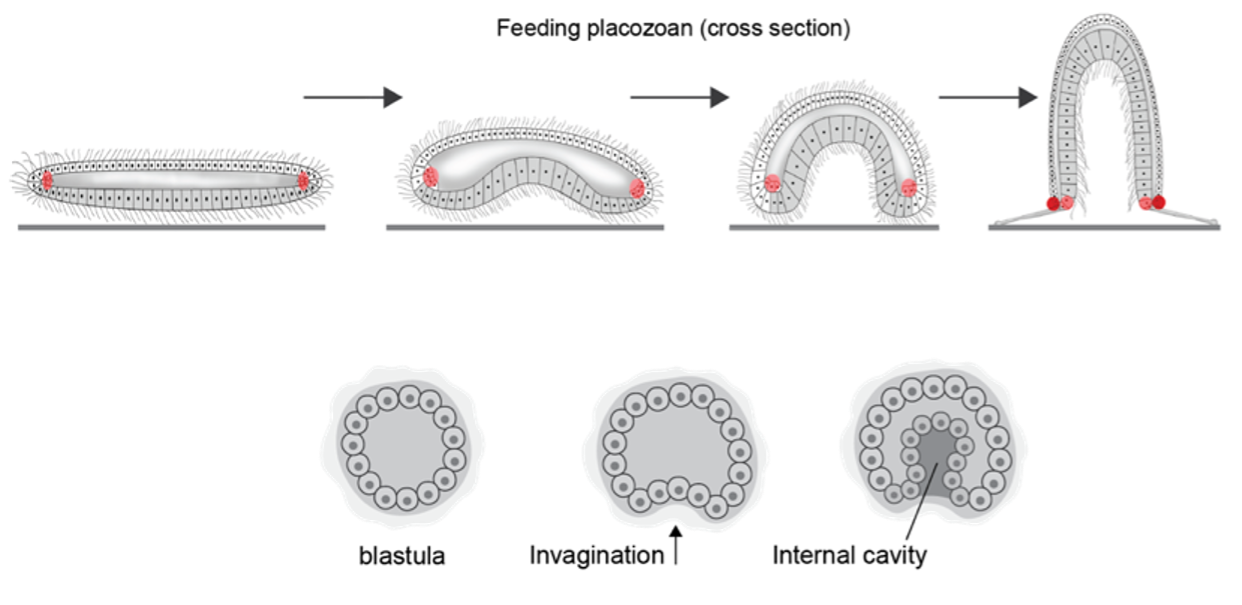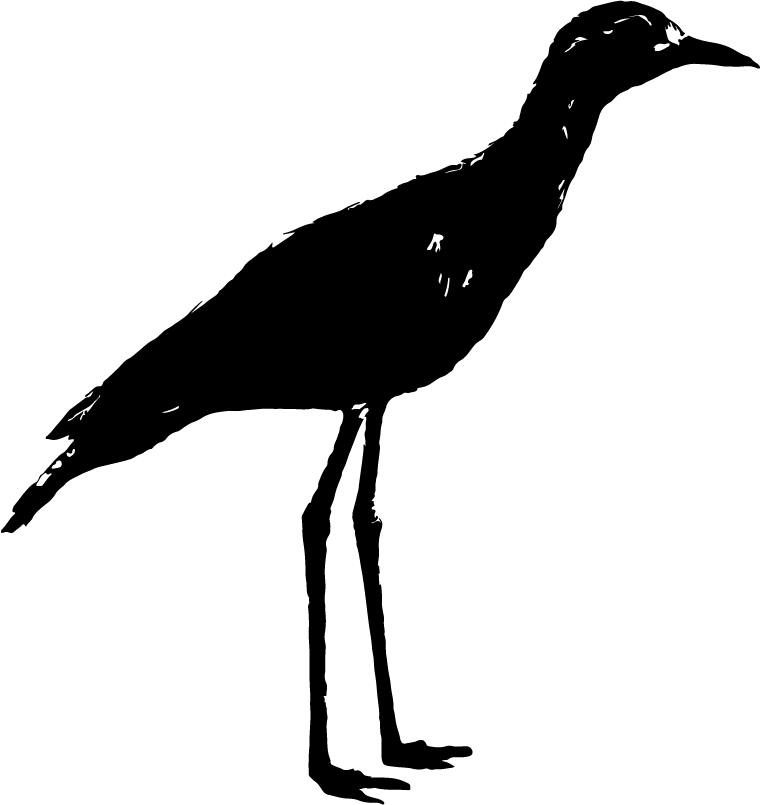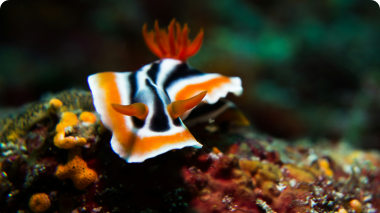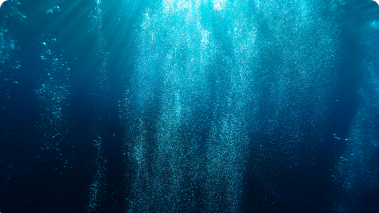There are just a few animal groups still alive today that have been around almost since the dawn of animal life itself. Animals that may trace their family trees right back through 900 million years of the Earth’s history — nearly an eon of existence. Humans have been around for a mere 2 million years. Yet, we have a surprising amount in common with these ancient animal relics.
Nine hundred million years is an incomprehensible length of time. Alongside distances in space and the quantum world, our minds can only grapple to understand. Through nearly an eon of animal life, the Earth has undergone drastic climatic and ecological transitions, as well as countless animal populations that came, saw, and conquered or rather evolved and flourished, before going extinct. So, for the few animal groups to have stood this momentous test of time, they surely warrant closer inspection as grand testaments of evolutionary success.
Porifera, Ctenophora (ten-o-fora), and Placozoa — these are the names of three animal groups (phyla) with a deeply ancient evolutionary past. They evolved millions of years ago, in a world unrecognisable from today’s (see Box 1). When Porifera and Ctenophora first arose — also known as sponges and comb jellies — the world was dominated by microscopic life and atmospheric oxygen levels were just 1% of today’s. Indeed, these three remarkable yet inconspicuous animal groups have persisted through two snowball earth ice ages, two global greenhouse warming events, have seen countless rises and falls of atmospheric oxygen, hung out with the dinosaurs, and are still here, living among us today.
Something about these animals appears almost alien and speaks of a different time. Sponges resemble amorphous blobs of cells growing like organised tumours on the sea floor, whilst the iridescent shine of comb jellies magnificently but eerily pulses through the deep blue. The placozoa, our closest relative of the three, is an elusive flattened-out pancake of cells that discretely glides across the seafloor. And yet these creatures are our relatives, albeit rather distant. But we all descend from a common animal ancestor.

Just as in humans, mice or flies, scientists use these ancient animal groups to understand core biological processes such as immunity, sensory systems, development, and gut microbiomes. But looking at images of some of these, you’d be forgiven for second guessing their status as an animal and their relevance to us for understanding bodily processes.
So, what is it that we have in common with creatures dating back through 800+ million years of the Earth’s history? And how can we learn from something that depicts a flattened blob, appearing to lack any animal complexity at all?
Box 1
Porifera, aptly means ‘pore bearers’, and these are also known as sponges. They are the filter feeders of our oceans, pumping thousands of litres of water in and out through their pores every day. Ctenophora, also called the comb jellies, resemble jelly fish, but are not related and are uniquely distinguished by iridescent ‘tenes’ that run all the way down their tentacles, giving them a beautiful shimmer in the night. Placozoa are amoeba like in appearance and are the most mysterious group of the three. They are paper thin, flat plate-like creatures, only 1mm across and three cell layers thick but can glide along surfaces by action of beating cilia cells and secreting a slippery mucus (bit like a snail does).
What makes all animals alike?
Animals are unique from the rest of Earth’s inhabitants by the core ways in which we reproduce, grow, feed, and that we can move!
Quite amazingly, sexual reproduction and early development are pretty much the same across all animal species. For humans, comb jellies and your cat, sexual reproduction starts with a single sperm and egg that fuse together and begins dividing, doubling the total number of cells each time. This forms a tiny hollow ball of cells called a blastula — a stage before we can call ourselves embryos and which we all essentially look identical. Taking a snapshot during these initial stages of development, it becomes very clear what we have in common with ancient animals.
Not only do these stages of development look the same, but they’re also controlled in the same way on a genetic level. Genes that regulate development, such as the Wnt signalling genes, function in the same way within humans as they do in placozoans, comb jellies and sponges. These genes are unique to animals and help set us apart from other life forms. Although the specifics vary from animal to animal, I’d say it would take a well-trained eye to confidently select a human blastula from that of your pet goldfish or sponge.

As animals, we also share a core method of feeding. Although you may not think this when you watch your dog inhaling their dinner. That is, food gets taken into a central cavity (known as the gut in most animals), where nutrients are extracted and digested before waste materials are excreted. This basic concept of internalised digestion is the same across almost all animal species and is distinct from feeding methods used by other organisms, such as plants or algae that harness energy from the sun and/or soil.
In mammals, birds, and insects, guts are complex with multiple specialised compartments and organs, but in sponges and comb jellies, it’s a simple, single cavity. And we humans are very lucky because not all animal species are fortunate enough to have openings at both ends to separate consumption from excretion! Nonetheless, all animals still have a distinct top and bottom, so-called body-axis polarity. The only animals we know of that don’t digest food internally are placozoans. Being only three cells thick, placozoans are so thin that they digest food externally and then assimilate it through their external cells (but see Box 2).
Box 2
Formation of the internalised cavity or gut begins when you are still just a tiny ball of cells, called a blastula. The bottom part of the blastula invaginates inwards from one end, enough to form an opening and internal space that eventually becomes a gut. Placozoans are the only animal without this internalised digestion. However, when placozoans feed, they form a shape considered similar to the invaginating blastula. The placozoan’s flattened body becomes raised and bends -equivalent of downward dog? This means the bottom layer of cells become inward facing and form a sort of cavity with the surface, trapping inside any food particles to be digested. Some scientists suggest the placozoan body plan most closely represents how the last common animal ancestor would have looked and fed, which they call the ‘placula hypothesis’.

Perhaps the most distinguishing feature of animals is the ability to move. And that is all animals (as far as we know) can move. Of course, some animals move so slowly that we cannot really see their movement except for returning an hour or so later to find something is no longer in the same spot — like with sea urchins, starfish, or your keys! But what about animals like sponges and corals that live most of their lives firmly attached to rocks or sand on the sea floor?
When you look at a coral reef, it hardly looks like it’s moving anywhere fast, and rest assured, it isn’t. But the lives of many marine animals are broken into multiple distinct phases. Similar to those of insects, such as a caterpillar’s wondrous transformation into a butterfly. For sponges and corals, the first part of their life cycle is spent freely swimming in the water as a larva. This is the part of their lives where they can move freely and swim to find a new home and food sources. After this, the larva will settle onto the sea floor, hopefully having carefully selected a good spot to attach and live out the rest of its days (Box 3).
By studying larva movement and responses, scientists have revealed a lot about animal sensory systems and the different ways animals can detect environmental conditions without a nervous system. So, all animals can move, but for some, we might just need to catch them at the right part of their life cycles.
Box 3
Aquatic animals with two distinct life phases, including a swimming larva and sedentary adult stages are said to have pelago-benthic life cycles. This comes from the word pelagic meaning, open water, and benthic meaning the lowest region in a body of water. The attachment of a larva to the surface and transition into its adult form is momentous, akin to that of a caterpillar’s transformation into a butterfly. The larva completely reformats its entire body plan, rearranging all its cells and either destroying them, or morphing them into adult cell types that the larvae doesn’t possess.
What can we learn from studying such ancient creatures?
About 70% of our genes are shared with those of a sea sponge. This seems phenomenal given how comparatively simple sponges are, being just lumps of specialised cells growing on rocks in the ocean. However, it is a good reminder of the similarities we share in the basic building blocks and regulatory components that make all animals function.
As sponges and comb jellies branched off from the tree of life so many millions of years ago, the genes we share with them are considered core animal genes that likely the last common animal ancestor would have also had. This means that 70% of human genes are highly conserved with deeply ancient, ancestral origins. Conversely, the other 30% are less conserved and could provide insight into unique specialisations that set humans and other animals apart.
Studying the genomes of sponges, comb jellies, and placozoans provides an evolutionary context for scientists researching the functions of our own genes. In the same way that studying history provides a context to understand the politics and regulations of today. For instance, sponges and placozoans don’t possess a nervous system, not even any neurons or synapses. But yet, they have receptors for molecules such as dopamine and glutamate which in humans are used as neurotransmitters within our brains. Scientists are studying these molecules in sponges and placozoans to investigate their diverse functions and the beginnings of primitive nervous systems.
Genetics researcher, Eunice Wong revealed that sponges possess most of the genes required to build the parts for a synapse. Scientists are calling these “protosynapses”, and Wong demonstrates how sponges use them for signalling inside their cells. Similarly, placozoans don’t possess neuron cells, but Sebastián Najle from the Centre for Genomic Regulation (CRG) in Barcelona is studying these creatures to understand key stages of nervous system evolution. Najle’s research reveals that placozoans cells used for coordinating behaviours have active neuronal-associated signalling components.
The simpler body plans of animals such as sponges, comb jellies or placozoans are valuable models for untangling the complex mess of gene regulatory networks. In humans, between 291 and 727 genes are connected to the development of cancer. This is already a huge number of genes to study. But things get even more complicated considering most genes can have more than one function (sometimes contradictory), depending on which cells (e.g., skin cells or liver cells) they’re active in. Given humans have an estimated 400 different cell types, isolating the extent to which a single gene may contribute to cancer becomes an enormous challenge.
Placozoans have just 6 cell types, whilst sponges completely lack any organs or tissues. Such vastly reduced body plan complexity makes it considerably easier to identify key genes influencing illness and disease. For instance, research into the human cancer-causing gene, DRG1, that is structurally similar within sponges has recently helped reveal shared regulatory networks and broader, non-cancer-related functions.
Conclusion
Upon first glance, and measured up against our human selves, sponges, comb jellies, and placozoans can appear rather primitive. However, this perception quickly crumbles with a closer inspection of their underlying cellular and genetic mechanisms, which are not too dissimilar from our own. Indeed, it is a marvel that they too, sexually reproduce, feed internally, sense and move within their surroundings without a need for eyes, muscles, or a nervous system; making complexity look simple is no easy feat.
Often, and not surprisingly, biological research is drawn towards mythical greats like the dinosaurs that dominated the planet or even seeks to revive extinct species such as the woolly mammoth, a legend from the ice age. But I would argue that those humbler creatures that have quietly endured nearly a quarter of the entire history of life on Earth are just as remarkable.
That sponges, comb jellies, and placozoans have persisted for so many millions of years speaks volumes of their evolutionary success. By looking through the lens of these three most ancient animals, we can learn not only about the history of animal life but the evolutionary genetics of their success. In doing so, we may carve a deeper understanding behind the biology of ourselves and the many threats and diseases we face.







